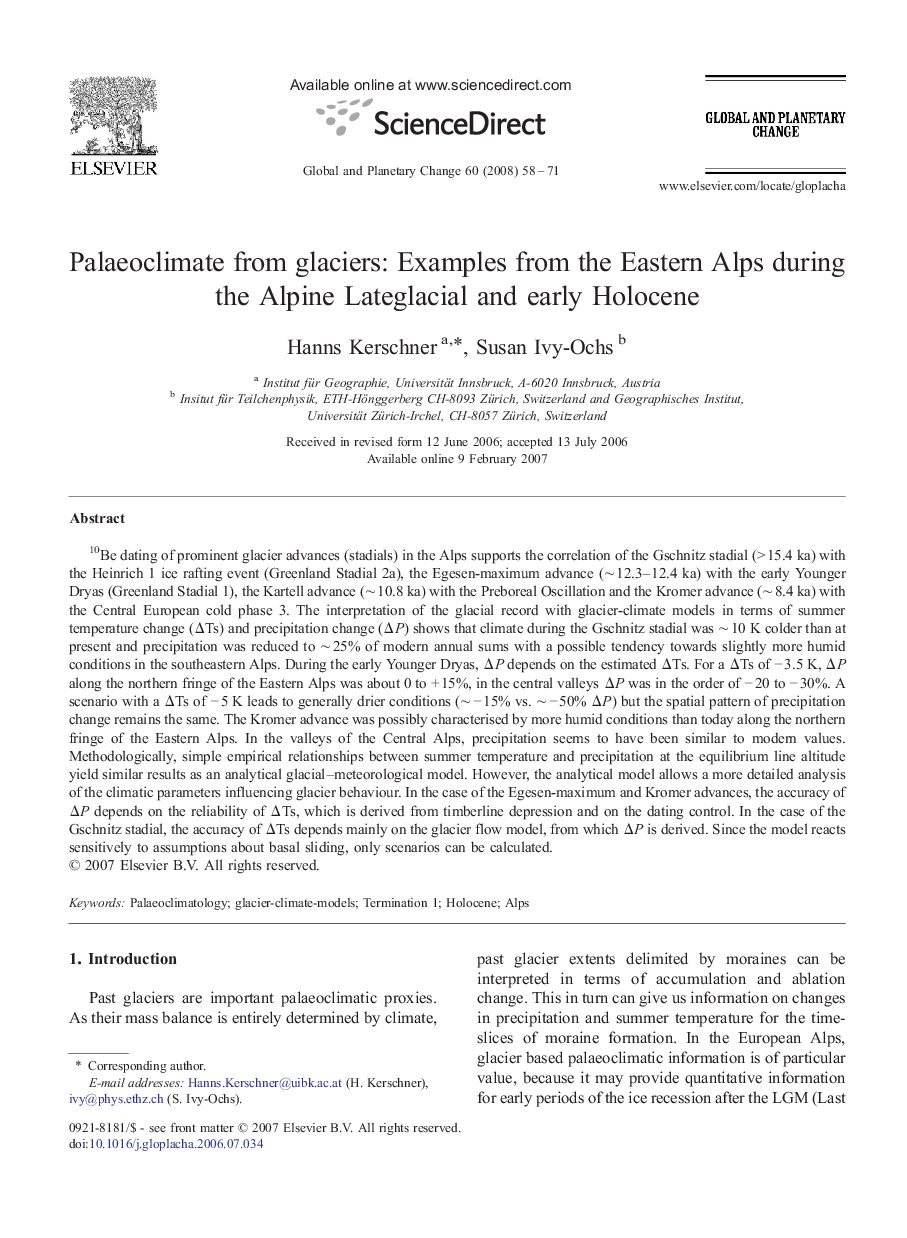| کد مقاله | کد نشریه | سال انتشار | مقاله انگلیسی | نسخه تمام متن |
|---|---|---|---|---|
| 4464304 | 1621725 | 2008 | 14 صفحه PDF | دانلود رایگان |

10Be dating of prominent glacier advances (stadials) in the Alps supports the correlation of the Gschnitz stadial (> 15.4 ka) with the Heinrich 1 ice rafting event (Greenland Stadial 2a), the Egesen-maximum advance (∼ 12.3–12.4 ka) with the early Younger Dryas (Greenland Stadial 1), the Kartell advance (∼ 10.8 ka) with the Preboreal Oscillation and the Kromer advance (∼ 8.4 ka) with the Central European cold phase 3. The interpretation of the glacial record with glacier-climate models in terms of summer temperature change (ΔTs) and precipitation change (ΔP) shows that climate during the Gschnitz stadial was ∼ 10 K colder than at present and precipitation was reduced to ∼ 25% of modern annual sums with a possible tendency towards slightly more humid conditions in the southeastern Alps. During the early Younger Dryas, ΔP depends on the estimated ΔTs. For a ΔTs of − 3.5 K, ΔP along the northern fringe of the Eastern Alps was about 0 to + 15%, in the central valleys ΔP was in the order of − 20 to − 30%. A scenario with a ΔTs of − 5 K leads to generally drier conditions (∼ − 15% vs. ∼ − 50% ΔP) but the spatial pattern of precipitation change remains the same. The Kromer advance was possibly characterised by more humid conditions than today along the northern fringe of the Eastern Alps. In the valleys of the Central Alps, precipitation seems to have been similar to modern values. Methodologically, simple empirical relationships between summer temperature and precipitation at the equilibrium line altitude yield similar results as an analytical glacial–meteorological model. However, the analytical model allows a more detailed analysis of the climatic parameters influencing glacier behaviour. In the case of the Egesen-maximum and Kromer advances, the accuracy of ΔP depends on the reliability of ΔTs, which is derived from timberline depression and on the dating control. In the case of the Gschnitz stadial, the accuracy of ΔTs depends mainly on the glacier flow model, from which ΔP is derived. Since the model reacts sensitively to assumptions about basal sliding, only scenarios can be calculated.
Journal: Global and Planetary Change - Volume 60, Issues 1–2, January 2008, Pages 58–71